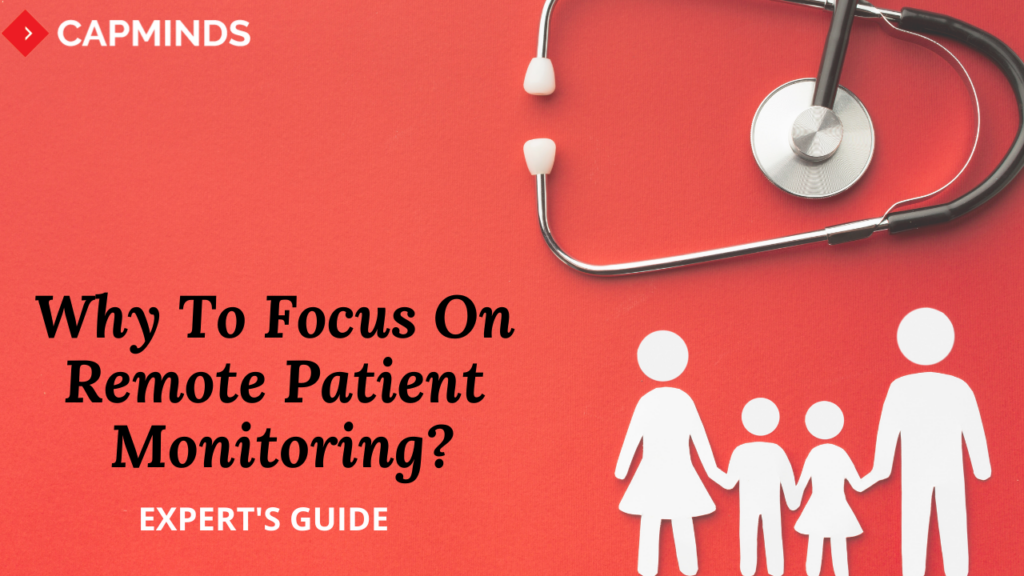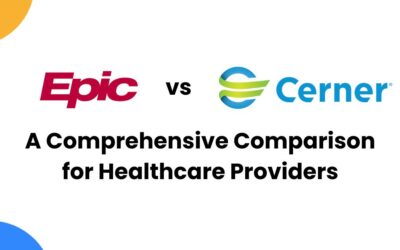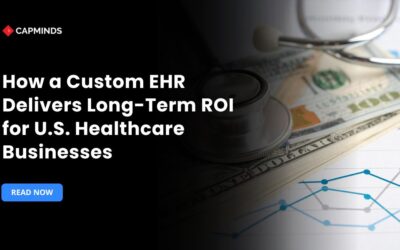Expert’s Guide:Why To Focus On Remote Patient Monitoring?
Remote Patient Monitoring has the true potential to improve clinical outcomes and reduce chronic care costs. Here is all about remote patient monitoring and why to focus on it for improved quality care.
What is Remote Patient Monitoring?
Remote patient monitoring allows health providers to monitor & analyze patient disease and symptom progression remotely and then engage with patients virtually to modify care plans and to educate patients about their healthcare conditions.
This amazing monitoring technology is really helpful for treatment and care during COVID-19 as it easily allows physicians to monitor blood pressure, temperature, and other symptom progressions, using digitally connected devices (sensors for body temperature or thermometers, and home blood pressure monitors)
Why Remote Patient Monitoring Is Necessary During COVID-19?
For the patients who are suffering from COVID-19, remote patient monitoring can help to reduce the risk of transmission to others and can also target the provision of hospital-based care on a timely basis. This kind of monitoring can free up valuable hospital resources and the physicians can treat only the most critical cases with top priority.
As we all know the current situation of COVID-19, patients who are tested as positive can recover at home by isolating themselves, but it is important to monitor their health conditions regularly. So here remote patient monitoring plays a greater role to recover quickly and safely.
How Remote Patient Monitoring Is Conducted?
The Remote patient monitoring setup is ordered by a patient’s clinician. The setup equipment can be provided to a patient at an in-person visit along with the setup instructions or also as home delivery. The clinician educates the patients by providing a short course about remote monitoring setup like how to use the equipment. The clinician then monitors the patient physiologic data, is pinged with alerts when there are concerning changes in the physiologic data, and conducts communications with the patient based on care need changes.
When educating patients, keep in mind that they need to:
- Be confident with the technology they will use.
- Get motivated to participate and generate accurate data.
- Know how their data will contribute to their care.
- Feel empowered to troubleshoot problems they encounter.
The demand for RPM equipment is leading to supply shortages, but many healthcare organizations stand ready to provide key service to clinicians, including home delivery, equipment management, and monitoring applications. Some EHR vendors like CapMinds include such integrations within their EHR software packages.
Steps Involved In Remote Patient Monitoring
Remote patient monitoring involves the collection, transmission, evaluation, and communication of patient health data from electronic devices.
The Four key criteria for Remote Patient Monitoring:
(1) The patient’s healthcare data is collected remotely
(2) The collected data is transmitted to a health care provider in a different location
(3) The healthcare data is evaluated and care providers are notified, as needed
(4) The healthcare providers communicate relevant data-driven insights and interventions to patients.
Remote Patient Monitoring RPM CPT Codes
CPT Code 99453: Remote monitoring of physiologic parameter(s) (e.g., weight, blood pressure, respiratory flow rate), initial; set-up, and patient education on the use of equipment. (Initial set-up and patient education of monitoring equipment)
CPT Code 99454: Device(s) supply with daily recording(s) or programmed alert(s) transmission, every 30 days. (Initial collection, transmission, and report/summary services to the clinician managing the patient)
CPT Code 99457: Remote physiologic monitoring treatment management services, clinical staff/physician/other qualified health care professional time in a calendar month requiring interactive communication with the patient/caregiver during the month; first 20 minutes
CPT Code 99458: It is useful if you need to spend more time on a particular patient’s data or communication with that patient. It allows for billing $42 per calendar month for at least 20 minutes of review or communication (on top of the initial 20 minutes) by physicians, QHCPs, or clinical staff.
CPT Code 99091: Collection and interpretation of physiologic data (e.g., ECG, blood pressure, glucose monitoring) digitally stored and/or transmitted by the patient and/or caregiver to the physician or other qualified health care professional, qualified by education, training, licensure/ regulation (when applicable) requiring a minimum of 30 minutes, every 30 days.
Benefits Of Remote Patient Monitoring
1. RPM makes healthcare easily available
RPM allows physicians to reach out to patients anywhere. During this pandemic situation, many people won’t prefer to visit a doctor directly at clinics. So here RPM will bring free consultation with a physician right to their homes. This is how medical establishments can gain more visitors without overcrowding facilities.
2. RPM Saves Money
According to the National Broadband Plan drafted by the Federal Communications Commission (FCC), the health care industry could save $700 billion in the next 15 to 20 years with the use of remote patient monitoring technology in conjunction with electronic health records (EHR).
The telehealth creates a smart way to visit doctors via video visits from anywhere and anytime. So it is not necessary to visit the clinic to collect test results and medications. By avoiding these unnecessary visits, healthcare organizations become less crowded and admit emergency patients alone and provide better treatment. Here the hospitals can save on operational costs by reducing re-admissions, staff engagement, and in-person visits.
RELATED:
11 BENEFITS OF TELEHEALTH IN HEALTHCARE 2021
TELEHEALTH – THE FUTURE OF HEALTHCARE
3. RPM provides Improved healthcare Quality
RPM not only improves the quantity of care but also improves the quality of care. Since RPM connects clinicians more directly (and virtually instantly) with relevant patient data, it makes their daily routines more efficient and eases the possibility of burnout — resulting in obvious benefits to patient care. Even better, RPM improves patient behavior by creating a system by which people are more engaged, and accountable for, their health.
How to Succeed with Remote Patient Monitoring?
At an early stage as you make the remote patient monitoring program, ensure you set explicit short-and long term objectives that have quantifiable measurements. Likewise, create an effective process to track your monitoring progress. By starting with these things, help you to measure your success more easily and identify the areas of improvement to make it better.
When it comes to remote patient monitoring, you can easily evaluate patient outcomes and patient engagement and observe impacts on satisfaction, financial, and operational measures. By knowing these metrics will help your practice to determine whether to expand the remote patient monitoring program to more patients or rework the programs to perform better.
Final Thoughts
The adoption rate of Remote Patient Monitoring is started growing day by day and it is one of the big healthcare marketing trends for 2021, every healthcare provider and marketer should concentrate on. So focus on remote patient monitoring for better healthcare delivery.




![The Guide to Custom EHR Application Development [Features + Benefits]](https://www.capminds.com/wp-content/uploads/2024/11/Blog-Featured-Images-2024-11-25T110915.039-400x250.jpg)